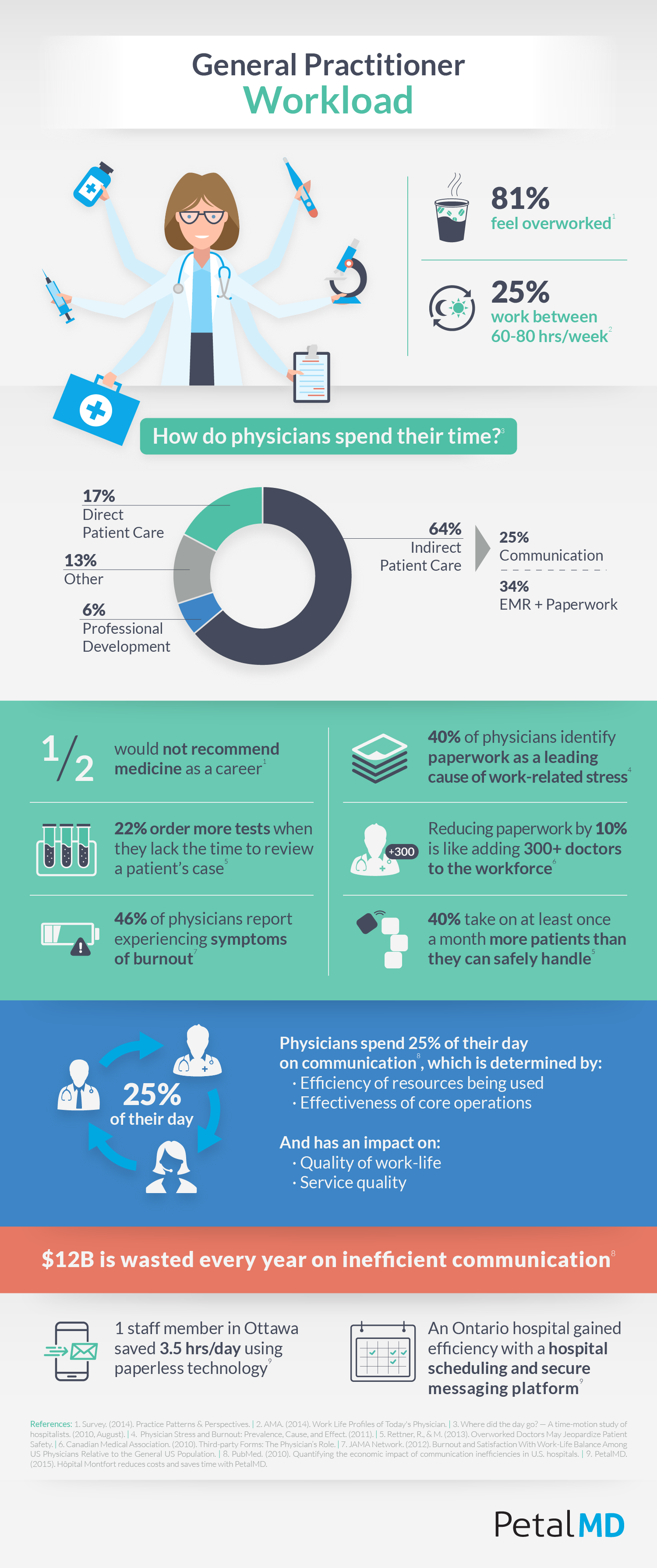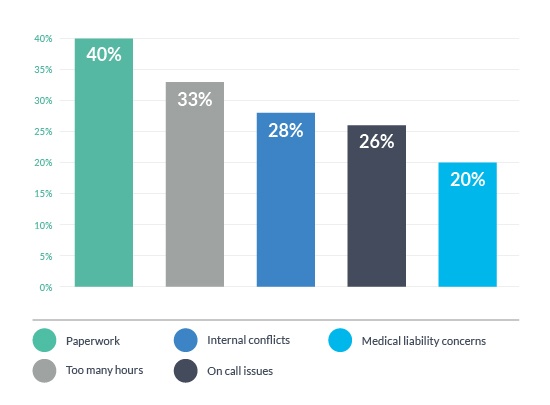
Medical practices, hospitals and physicians are increasingly integrating technology into their work ways. This being said, the automation of some processes has helped many staff members become more efficient, but has also highlighted the problems and inefficiencies of other, less technological procedures.
What is the Current Situation for GPs?
The lengthy processes of many administrative tasks which physicians must undertake has reduced the amount of time they can spend with patients in a given day. These include paper schedules, manual transcriptions, paperwork, etc. Although this may not be as apparent on a day-to-day basis, it can have serious consequences on overall healthcare services in the long run.
In fact, a Newswire article showed that in 2007, over 5 million Canadians (14% of the population) didn’t have a family physician; a statistic that has not significantly diminished since.
Interestingly, an Ontario study, referenced in a CMA policy, found that:
“A modest 10% reduction in time spent on paperwork — of which third-party forms represent a significant portion — would result in more hours for patient care equivalent to having an additional 392 physicians working in the system.”
Physicians spending more time on indirect patient care and paperwork rather than direct patient care has also led to them feeling overworked and has increased cases of physician burnout.
What are Some Statistics on Family Physician Workload?
A more complete analysis of this situation is highlighted in the infographic below.

Evidently, family physicians are overextended due to the amount of paper-pushing processes in their daily work. As highlighted in a study published on the Wiley Online Library, physicians only spend 17% of their day on direct patient care. The overwhelming amount of time they spend on paperwork can seem like a far cry from what they signed up for as doctors. At 40%, it is also the number one source of stress for physicians, according to an AAOS study.

How Can We Reduce Some of the Paperwork?
Although much can be said on the time physicians spend dealing with EMRs, administrative forms and the like, another type of paperwork that actually requires a great deal of time to plan and manage are physician schedules.
Scheduling solutions can greatly alleviate the administrative burden for physicians by:
- Automating paper schedules
- Eliminating countless planning hours
- Providing updated schedules in real-time to physician or clinical groups
- Allowing physicians to easily exchange shifts amongst themselves
- Easing communication between teams
Automated physician schedules are gaining traction among general practitioners and emergency departments, among others, and are increasingly being adopted.
